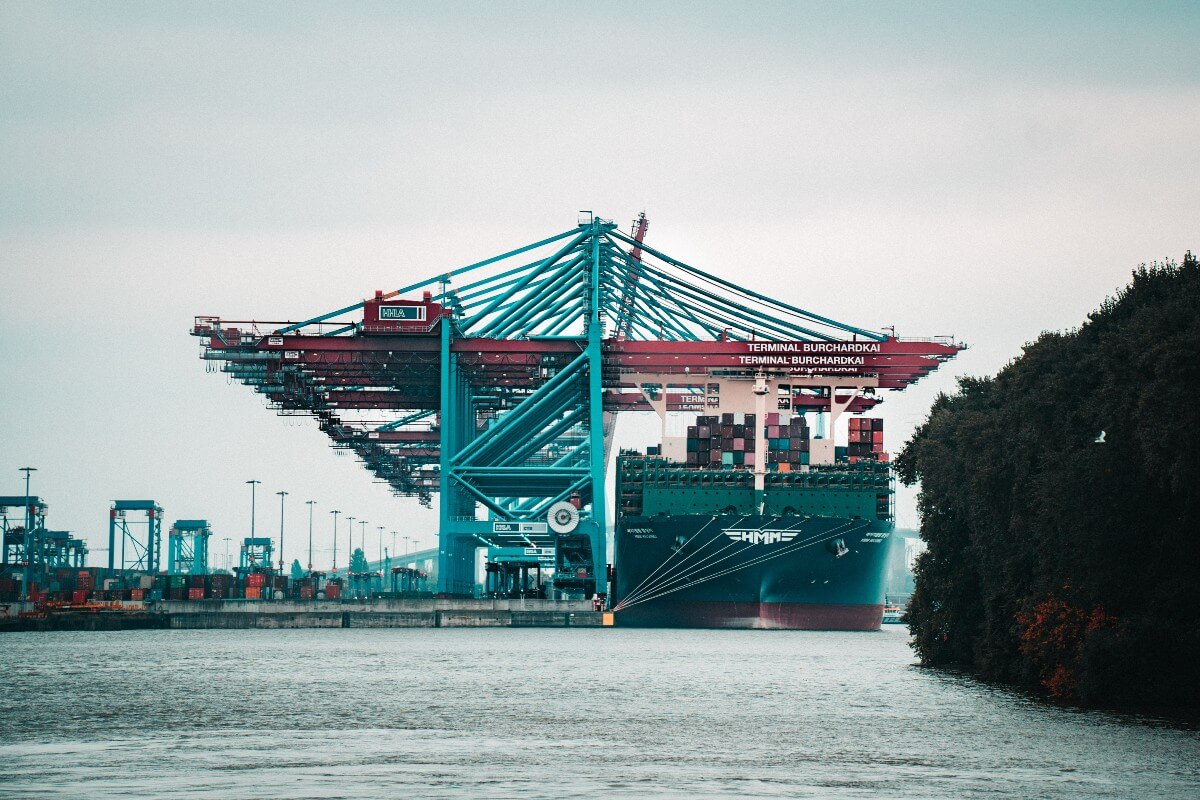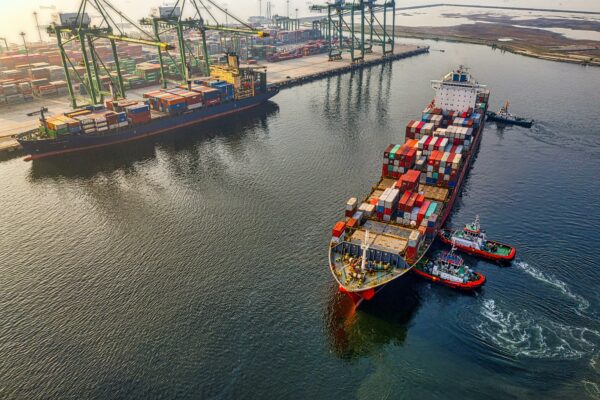4 ways to control supply chain risks
Jul 22, 2022
Scroll to find out more
Jul 22, 2022
Scroll to find out more

With disruption rattling the cages of supply chains for over 2 years, we brought together experts from Zencargo and Xeneta to discuss what supply chain risks teams should prepare for over the next 6 months and how to mitigate them.
Richard Fattal, CFO and co-founder of Zencargo, was joined by Patrik Berglund, CEO and founder of Xeneta, a platform for ocean and air freight rate benchmarking and analytics, to discuss what’s next for supply chains.
There is some good news for supply chain teams. Most trades have seen some generalised reduction in rates and some localised improvements in space, transit times and service reliability.
While this gives the impression that things are ‘on the mend in the supply chain’, Richard suggests that the reality “is that there are still some very significant challenges and the potential for more volatility over the rest of the year”.
Let’s take a closer look at what these supply chain risks might be.
Local lockdowns in China due to covid have been causing congestion. This has resulted in more volumes coming out of the country as ports reopen. Adding to this congestion, China has recently seen a significant increase in covid cases. The country has introduced mass testing which could lead to further congestion.
As well as battling covid, China has been hit by typhoons. This has caused ports, such as Singapore, to shut during the extreme weather. As shippers try to avoid port closures, Richard reports that “67% more container ships coming out of South China”, resulting in further congestion.
Although the supply chain risks associated with covid in Europe have slowed down, these risks have been replaced with the economic repercussions of the past 2 years.
Richard says, “once again we find ourselves in an environment of uncertainty”. He adds that “inflation, higher interest rates and higher costs of living” are influencing consumer spending. This will impact how businesses plan and prepare as they could see impacts from “potential reduction in spending [and] consumer spending shifting towards transport and services”, says Richard.
During discussions, Patrik highlighted how “US importers are shifting their volumes from US West Coast to US East Coast” This is “creating congestion and increased prices for volumes going to Europe and US East Coast”, says Patrik.
Richard says that port congestion could lead to carriers using “mechanisms like blank sailings or changing of routing and not [calling] at particular ports in order to manage their capacity”. This is why “you can’t just look at a generalised trend when you are looking at your purchasing decisions about how you want to allocate your cargo”, says Richard.
There has also been a change in supply chain risk management. Last year, businesses focused on sales and ensuring that they had enough stock for consumer demand. This lead to “larger buffers in planners ERP systems and bigger orders that meant more safety stock”, says Richard.
However, in the first half of the year, Richard says that he has seen a “destocking period, particularly in eCommerce” as businesses begin to work through their stock. Richard explains that the reason businesses tend to over sock is because there is a “big question mark” around what’s next. For example “what’s going to happen with peak season? Is it going to come earlier? Do we need larger buffers because of the transit times?”.
Patrik and Richard provided some solutions on how businesses can overcome this fear of uncertainty and start working more strategically to address supply chain risks.
33% of supply chain professionals that attended Zencargo’s July Navigate event felt that they were not prepared for what’s to come throughout the next 6 months and beyond.
The combination of uncertainty over what disruption awaits and lack of visibility to clearly navigate through change, leaves supply chain teams in the dark. As a result, teams can’t make effective and quick decisions. Meeting business goals and KPIs also becomes more of a challenge. Additionally, the inability to monitor performance creates a lack of understanding of where a business has been and where it is going.
But how can teams access this data? What can it tell them? And how can they use it in supply chain risk management?
A solution that Patrik suggests is to “effectively de-risk your strategies to be able to… look at your volumes to understand what capacity you really need”. This allows you to focus on getting the volumes you need so that you have guaranteed stock for when you need it.
Once you have established what volume you need, you can work out solutions for when disruption hits. For example, Patrik suggests that “you might want to have some volume that is either on the spot market or working on an index basis”. This allows teams to move products on a case-by-case basis.
With the capacity that is not as critical, you can play on spot rates, for instance, to see what the market looks like and how it is changing. For example, you might notice patterns that indicate a recession and how badly it will hit your supply chain.
By identifying these trends through data, you can put yourself in a “position where you can negotiate volumes in order to potentially extract some savings”, says Patrik. You can also establish what rates strategy will work best for your size and volume. For example, you might choose a long-term contract for your critical capacity to secure rates and space.
To work out what strategy is best for your business, you need to have visibility of:
This visibility can help your team to identify issues, trends and anomalies to find the right solutions and strategies to combat risks in supply chain management . For example, you can spot patterns in rates to work out what relationships and contracts work best for you.
A solution that you might come to is deciding to lock into a long-term contract. On the other hand, “if you have the maturity to think about an index regulated contract” this can help when the “market goes up and you need to secure supply, [but] also if the market goes down in order to reap some of those benefits”, says Patrik.
The best way to establish which route is best for you is to work with a digital freight forwarder who can provide you with the data points needed to evaluate your supply chain.
Discussing volumes and how you see the rest of the year with a freight forwarding partner can assist in supply chain risk management.
Your freight forwarder should work with you to understand “the volume that you are moving and the volume that you are selling”, says Richard. By understanding your business needs and KPIs, your forwarder should be able to identify “the right agreement and the right structure of the relationship with the shipping line is for you”, says Richard.
Zencargo experts work with you to understand what problems you might be having, whether that’s with rates, warehousing at destination or overstocking. From here, our experts can help you to navigate relationships, find the right space, reduce costs per shipment and provide a supply chain risk assessment.
To find out more about how our platform can improve visibility and data quality, and how our experts can help you to navigate uncertainty, book a call today.

If you’re looking for a partner who can support you through 2024, and beyond, w...

Last updated: Monday 3pm BST On Friday 19th July, an unprecedented global issue...
